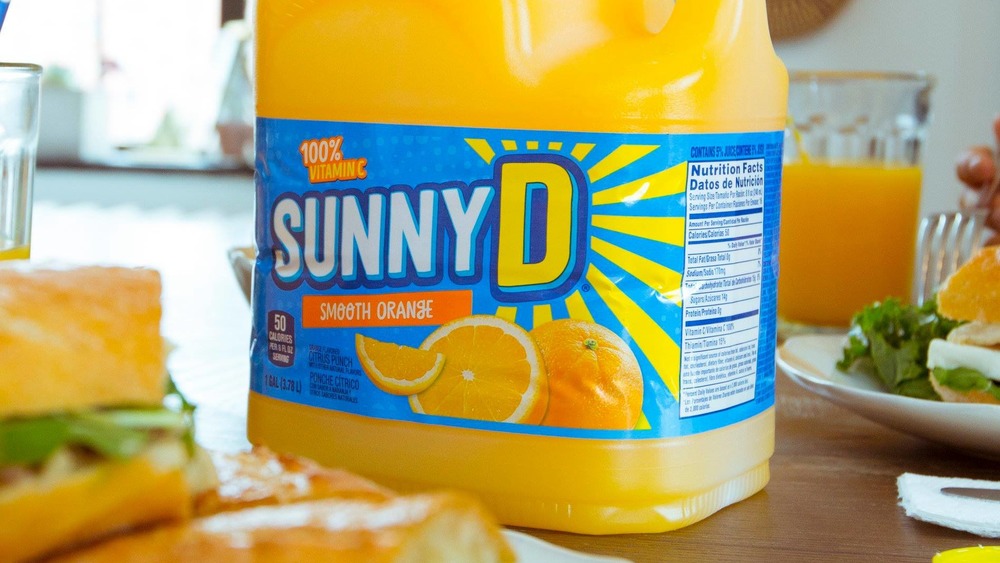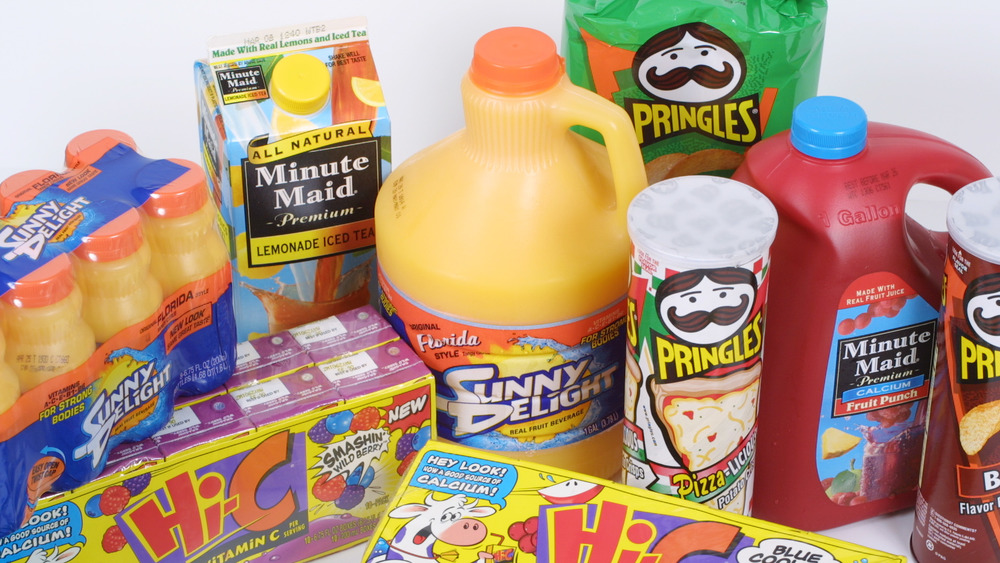The Real Reason SunnyD Changed Its Name
After a long, hard day of playing frisbee at the beach, what drink do you desperately hope your mom has stocked in the fridge? Soda? O.J.? Purple stuff? Nah, bro, you know you're looking for that SunnyD. The tangy, radioactive-looking beverage in the back; the one that even the 30-year-old "kid" in those classic '90s commercials knew was not in the same category as actual orange juice (via YouTube). In those days, SunnyD was just the drink's street name; among the sophisticated crowd, it was known as Sunny Delight. Why the name change? A high-fructose corn syrup by any other name would taste as sweet, right? It turns out that Sunny Delight badly needed a pivot in the early aughts, and a re-brand was literally the least they could do.
According to SunnyD's website, the company began with two dads standing in a citrus grove in 1963, confident that they could do better than actual oranges. Fast forward to the 80s and 90s, and Sunny Delight has taken the U.S. by storm and is poised to spread a little sunshine over Europe, too. According to The Tab, a £10 million advertising campaign in Britain in 1998 proved to be money well spent, as Sunny Delight became the 12th best-selling grocery store product in the U.K., and was third only to Coke and Pepsi in the soft drink game. But the orange bubble was about to burst.
An urban legend confirmed, a name forever changed
When a company's target audience is school children, bright colors and sugar content usually mean smooth sailing for a brand. But playground rumors can make the waters choppy. Pop Rocks narrowly avoided imploding (pardon the pun) in the '80s, but there was no denying that damage had been done and sales suffered accordingly. In the '90s, an urban legend threatened to wreak havoc on Sunny Delight's good name in a similar fashion. However, in 1999, Sunny Delight had to do something Pop Rocks never did: publicly admit that the urban legend was true. Sunny Delight did, indeed, turn a kid orange.
In December of 1999, The Independent reported that Dr. Duncan Cameron, in Clywd, Wales, had treated a four-year-old who had been brought in with a very Roald Dahl-esque symptom — she had turned orange. Or, at least, her hands and face had taken on a yellowish tinge, as skin is wont to do when it absorbs too much betacarotene. The ingredient occurs naturally in carrots and oranges, and Sunny Delight didn't contain an abnormally high amount; just 15 percent of an adult's recommended daily intake. But for a child who was reportedly drinking 1.5 liters of the stuff per day? Yeah, it turned her orange.
One can only assume that after this incident, parents took a closer look at the label and were less than delighted. According to Vice, sales plummeted, leading to a 2003 rebrand for good ol' SunnyD. This time, SunnyD had a new manufacturer and a new recipe. As recently as 2010, SunnyD has been reformulated to contain less juice (via The Grocer).

